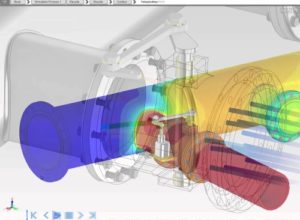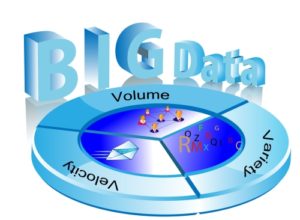With the release of ANSYS 18, the computer-aided engineering is extending the journey towards Internet of things ( IoT) and digital twin. The next phase for ANSYS was made possible after collaborating with PTC ThingWorx and GE Predix that enables development of applications. Besides the release, the objective of manufacturers is to ensure that simulations go throughout the life-cycle of the product right from design, manufacturing, use, and end of life.
IoT and Digital Twin will make CAE widespread
Simulations are going ahead focusing towards the product development in the edging as well as into the operations. The collaboration with the two IoT platforms (PTC ThingWorx and GE Predix) was a right move as both the companies had a head start in the IoT market and hold a significant place in the engineering community for the CAE software. It is a good way to hedge your bets and integrate with the market winners to introduce ANSYS’ simulation technology.
 Simulation Engineering Application Builder available for ANSYS Users
Simulation Engineering Application Builder available for ANSYS Users
Simulation Engineering apps are yet another way to branch out for the design cycle. ANSYS 18 comes packaged with the application building software, which is taken into use for creation of simulation engineering apps. Additionally, consultants and engineers can sell and share the apps to clients via ANSYS app store. Besides share and sell feature, customizing usage and limiting deployment for a specific project is also possible.
Extending the Scope of ANSYS AIM
The new release has extended the capabilities of AIM with the upcoming of ANSYS Fluent and Mechanical. Previously, AIM was a product with some feature gaps but has now expanded towards some broad applicability. These files are easily transferable into ANSYS flagship simulation software in a way that analysts can explore into physics of designs without starting from the scratch.
 Technology Enhancements to ANSYS 18 Portfolio
Technology Enhancements to ANSYS 18 Portfolio
Noted were a few material advancements in ANSYS Mechanical, Geological, Electronic, and Biological Simulations. As an example, engineers will soon be able to simulate material with variable properties. Apart from these, ANSYS portfolio will experience ANSYS CFD Enterprise offering a new package of fluid dynamics, ability to study antenna signals, ability to import electrical models based on chip profiles and UI enhancement in the portfolio as per the customer feedback.
As a company seizes the opportunities presented by new trends, ANSYS seems to undergo continuous development keeping the software to lead the world via pervasive engineering simulation.











